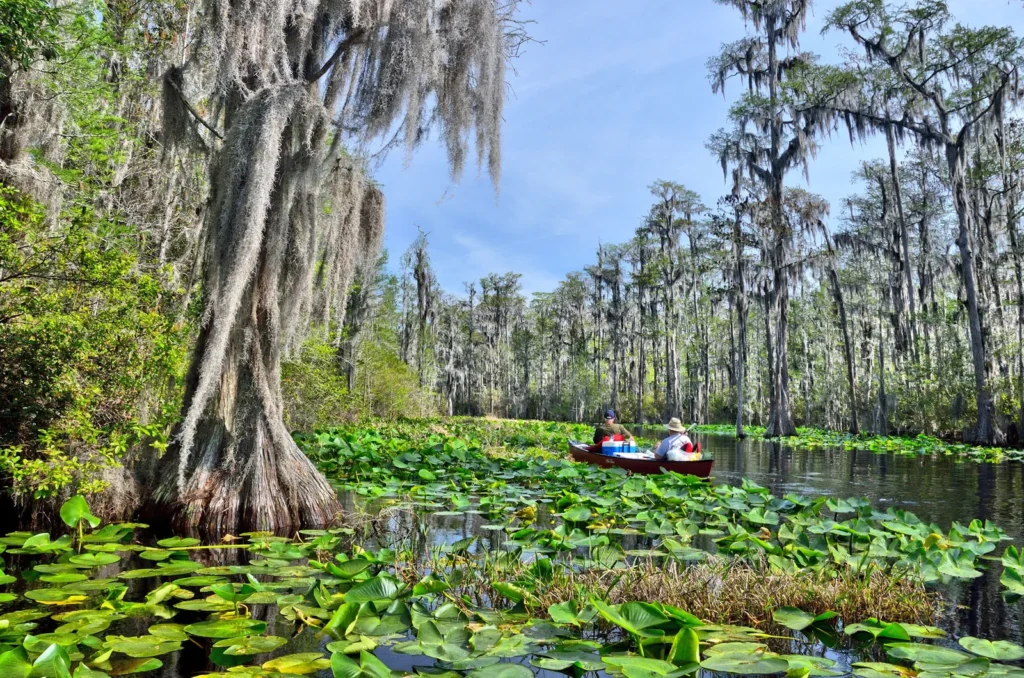Discovery of Mangroves in Georgia: Indicative of Climate Change
A recent discovery along Georgia’s coast by a team of curious nature explorers has once again highlighted the impact of global warming. The explorers found that a notable tropical plant species, the mangrove, known for their saltwater-loving nature and distinctive barbwire-like roots, has extended its habitat to Georgia.
Ches Vervaeke, a coastal ecologist with the National Park Service, led the expedition with Candy Feller, a seasoned mangrove researcher from the Smithsonian Institution, and a reporter from Scientific American. They initially began their search along the northern Florida shoreline, which was previously known as the northernmost dwelling of this type of tree.
Their journey at Amelia Island, Florida, turned into an unexpected adventure as they found mangroves growing farther north than anticipated. “Every mangrove that we found… was the new northernmost mangrove along the East Coast,” Vervaeke revealed in a recent interview. Their discovery repeated about 15 times during their expedition.
They had reached Fernandina Beach, near the Florida-Georgia state line, when they decided to venture into Georgia territory. They crossed the St. Marys River into Georgia, and it was there, in Cumberland Sound where the group came across a mangrove. “I can’t believe it. There are mangroves in Georgia,” Vervaeke stated with surprise.
Climate Change Influencing Migration of Plant and Animal life
Global warming is creating favorable conditions, allowing plant and animal life to move north from their typical tropical habitats. Jaynie L. Gaskin, a wetland biologist with the Georgia Department of Natural Resources Coastal Resources Division, explained that “warming temperatures, including milder winters, are believed to be the driver of the expansion of mangrove habitat.”
According to Climate Central, average winter temperatures in Jacksonville have risen 3.4 degrees over the past half-century.
Climate change, primarily influenced by burning fossil fuels for energy, heating, and transportation, has lasting effects on our environment, including the migration of mangroves. “Mangrove migration is expected to steadily expand along the East and Gulf coasts with the projections of continued warming,” warned Gaskin.
Mangroves Vs Salt Marshes: Ecosystem Implications
Not so long ago, the Merritt Island National Wildlife Refuge marked the boundary between Florida’s more temperate north and the tropical south. However, as global warming has progressed, this climatic border has moved significantly, causing mangroves to gradually replace salt marshes in the north.
Mangroves are known to improve water quality, reduce storm damage and erosion, and even support economic growth through tourism. However, Gaskin noted, “we lack an understanding of how these ecosystem services may change” as the transition from salt marsh to mangrove occurs.
Furthermore, the Georgia coast, including its 14 major barrier islands, is expected to influence the migration of these trees. “When ocean currents bring mangrove seedlings north from Florida wetlands, the outer fringe marshes are likely to be the site of first deposition and possible establishment,” explained Gaskin.
Indeed, more research is needed to understand the impacts of mangrove migration on local ecosystems. Vervaeke emphasized, “There needs to be more research done to see if these mangroves are actually going to establish, start reproducing and actually compete with the marsh this far north.”
Original Story at www.savannahnow.com
